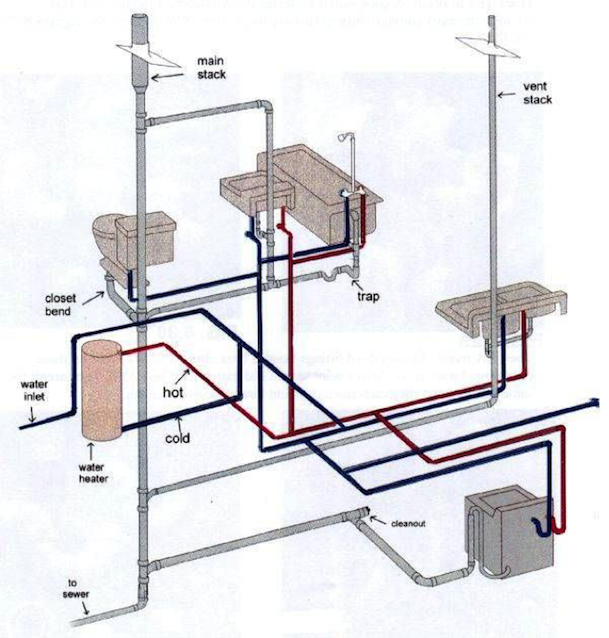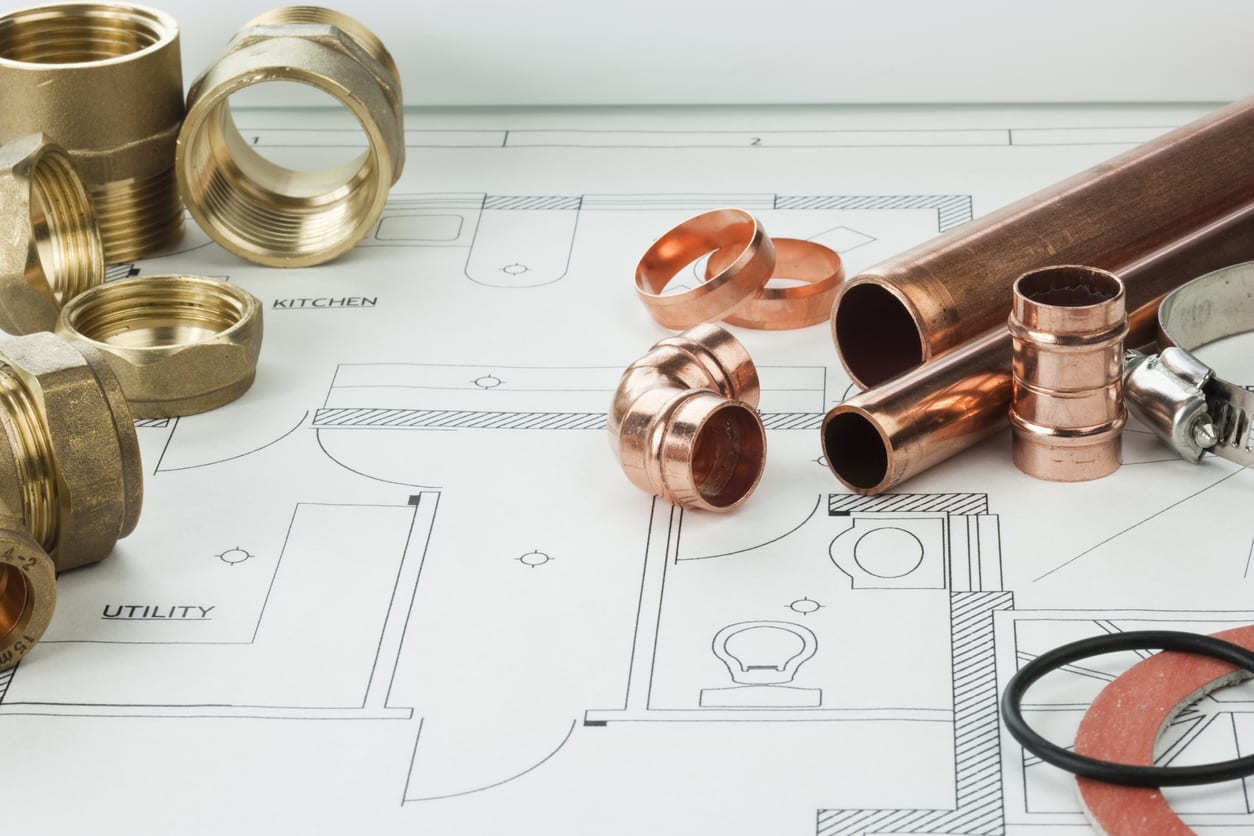Essential Insights About Your Home's Plumbing System Anatomy
Essential Insights About Your Home's Plumbing System Anatomy
Blog Article
What are your beliefs on Understanding Your Home's Plumbing Anatomy?

Recognizing just how your home's pipes system works is important for every single house owner. From providing clean water for alcohol consumption, cooking, and bathing to securely getting rid of wastewater, a properly maintained pipes system is important for your family's wellness and convenience. In this detailed guide, we'll explore the complex network that makes up your home's plumbing and deal ideas on maintenance, upgrades, and managing typical concerns.
Intro
Your home's plumbing system is more than just a network of pipelines; it's a complicated system that ensures you have access to clean water and effective wastewater elimination. Recognizing its elements and how they work together can help you protect against pricey fixings and make sure every little thing runs efficiently.
Fundamental Parts of a Plumbing System
Pipes and Tubes
At the heart of your pipes system are the pipes and tubes that lug water throughout your home. These can be constructed from different materials such as copper, PVC, or PEX, each with its advantages in terms of sturdiness and cost-effectiveness.
Components: Sinks, Toilets, Showers, and so on.
Components like sinks, commodes, showers, and bath tubs are where water is made use of in your house. Recognizing just how these components attach to the plumbing system assists in diagnosing troubles and intending upgrades.
Valves and Shut-off Points
Valves control the flow of water in your plumbing system. Shut-off valves are crucial during emergency situations or when you require to make fixings, permitting you to separate parts of the system without disrupting water flow to the whole residence.
Water System
Key Water Line
The main water line connects your home to the municipal water or a personal well. It's where water enters your home and is distributed to various components.
Water Meter and Pressure Regulator
The water meter measures your water use, while a stress regulatory authority guarantees that water flows at a secure stress throughout your home's plumbing system, stopping damage to pipes and components.
Cold Water vs. Warm water Lines
Comprehending the distinction in between cold water lines, which provide water directly from the main, and warm water lines, which lug heated water from the hot water heater, assists in fixing and planning for upgrades.
Drain System
Drain Piping and Traps
Drain pipelines lug wastewater far from sinks, showers, and bathrooms to the drain or sewage-disposal tank. Traps protect against sewage system gases from entering your home and additionally catch debris that could trigger blockages.
Ventilation Pipes
Ventilation pipelines allow air right into the drain system, stopping suction that could reduce drain and cause traps to vacant. Correct ventilation is essential for keeping the integrity of your pipes system.
Relevance of Appropriate Drainage
Making sure proper water drainage stops backups and water damage. Regularly cleansing drains and keeping catches can stop pricey fixings and expand the life of your pipes system.
Water Heating Unit
Types of Hot Water Heater
Water heaters can be tankless or standard tank-style. Tankless heaters warmth water as needed, while containers keep heated water for prompt use.
Updating Your Plumbing System
Factors for Updating
Updating to water-efficient fixtures or replacing old pipelines can enhance water top quality, decrease water expenses, and raise the worth of your home.
Modern Pipes Technologies and Their Advantages
Discover technologies like smart leakage detectors, water-saving toilets, and energy-efficient water heaters that can conserve money and lower environmental impact.
Expense Considerations and ROI
Compute the upfront prices versus long-lasting cost savings when taking into consideration pipes upgrades. Numerous upgrades spend for themselves with reduced utility bills and less repair work.
Just How Water Heaters Link to the Plumbing System
Understanding just how water heaters attach to both the cold water supply and hot water circulation lines assists in diagnosing problems like not enough warm water or leakages.
Maintenance Tips for Water Heaters
Regularly purging your water heater to remove sediment, inspecting the temperature level settings, and checking for leakages can extend its life expectancy and boost energy performance.
Typical Pipes Problems
Leakages and Their Causes
Leakages can occur as a result of aging pipes, loosened fittings, or high water pressure. Attending to leaks immediately prevents water damages and mold and mildew growth.
Obstructions and Obstructions
Clogs in drains pipes and toilets are commonly triggered by flushing non-flushable products or an accumulation of grease and hair. Making use of drainpipe screens and being mindful of what drops your drains pipes can stop clogs.
Indicators of Plumbing Issues to Watch For
Low water stress, slow drains pipes, foul odors, or abnormally high water expenses are indications of potential plumbing issues that need to be addressed without delay.
Plumbing Upkeep Tips
Normal Evaluations and Checks
Arrange annual plumbing examinations to catch concerns early. Look for indicators of leakages, corrosion, or mineral accumulation in faucets and showerheads.
Do It Yourself Maintenance Tasks
Basic tasks like cleansing tap aerators, looking for bathroom leakages using color tablets, or protecting subjected pipelines in cold environments can protect against major pipes problems.
When to Call a Specialist Plumbing Professional
Know when a pipes problem requires professional experience. Trying complicated fixings without proper understanding can bring about even more damage and higher fixing costs.
Tips for Decreasing Water Use
Simple practices like taking care of leakages without delay, taking much shorter showers, and running complete loads of laundry and dishes can conserve water and lower your utility expenses.
Eco-Friendly Pipes Options
Take into consideration lasting plumbing materials like bamboo for flooring, which is durable and green, or recycled glass for countertops.
Emergency Preparedness
Steps to Take During a Plumbing Emergency
Know where your shut-off valves are located and just how to turn off the supply of water in case of a ruptured pipeline or major leak.
Value of Having Emergency Situation Contacts Helpful
Maintain call details for local plumbing technicians or emergency situation services easily offered for quick action throughout a plumbing crisis.
Environmental Effect and Preservation
Water-Saving Components and Home Appliances
Mounting low-flow faucets, showerheads, and toilets can considerably minimize water use without sacrificing efficiency.
Do It Yourself Emergency Fixes (When Appropriate).
Short-term solutions like making use of air duct tape to spot a dripping pipe or placing a container under a leaking faucet can reduce damage until a specialist plumbing technician arrives.
Verdict.
Recognizing the makeup of your home's pipes system equips you to preserve it efficiently, saving money and time on fixings. By complying with regular upkeep regimens and staying informed concerning contemporary plumbing modern technologies, you can ensure your plumbing system operates successfully for several years to find.
HOW YOUR PLUMBING SYSTEM WORKS
Which Pipes Do What?
Blue lines = fresh water supply entering the building Red lines = hot water supply entering the building Grey lines = pipes carrying waste away from the building and venting pipes carrying gases away from the building (through the roof) YOUR MAIN PLUMBING SYSTEMS
There are two main plumbing systems that support your home s basic plumbing needs one that brings clean water into your home, and one that sends dirty water away from your home. Connected to the toilet, bath, shower, and other faucets in your home, these two systems keep your water flowing in the right directions.
ACCESSING FRESH WATER
Fresh and clean water is brought into your home through the main water supply line . Filtered through one pipe, this water is pressured to flow into the various fixtures in your home at any given time.
This water can be sourced from a well located on your property, a pond or river (mostly cottages), or, as in most cases, from the city s municipal water treatment centre. However, it is important to note that water that is untreated, such as the water siphoned from ponds or rivers, may not be safe to drink. Personal water supplies always need to be treated for hardness and contaminants before consumed.
MUNICIPAL WATER SUPPLIES
Improve taste and odour Remove sediment Eliminate hardness Reduce chlorine COLD WATER SUPPLY VS. HOT WATER SUPPLY
Cold water flows into your home or building through the service line, which then distributes hot or cold water to your fixtures. This line is most commonly run through a central column that runs floor to floor. Hot water runs in short and straight pipes as the longer the pipeline, the more heat that will be lost in the transfer. Having shorter pipes also allows residents to access hot water more quickly.
WASTE WATER SYSTEM
Your wastewater system is divided into two parts pipes that send wastewater away from your home and venting pipes that send sewer gas away from your home. Sewage water travels through pipes that flush the water and waste towards local sewers that are operated and managed by your city or town. Most sewer systems rely on gravity to move the wastewater to where it needs to go.
The further away from your toilet or sink, the larger wastewater pipes become. This allows for waste to be disposed of from various parts of your home or business at once without pipe blockages. The angle and flow of these pipes are also essential for keeping your waste pipes clear of build up.
https://harrisplumbing.ca/how-your-home-plumbing-system-works/

As a serious reader on Exploring Your Homes Plumbing Anatomy, I thought sharing that section was a smart idea. Enjoyed reading our write up? Please share it. Let another person locate it. I cherish your readership.
Visit The Following Page Report this page